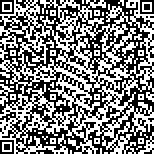张艳云,李峰,高楠,徐丽娜,胡明芳.边缘性舌系带过短患者异常舌尖后音的语音特点及其康复训练方法研究[J].中华物理医学与康复杂志,2016,38(10):755-759
扫码阅读全文

|
| 边缘性舌系带过短患者异常舌尖后音的语音特点及其康复训练方法研究 |
|
| |
| DOI: |
| 中文关键词: 边缘性 舌系带过短 异常 舌尖后音 语音特点 康复训练 |
| 英文关键词: Marginality Ankyloglossia Blade-palate Articulation |
| 基金项目:河南省教育厅科技基金资助(2009A320023)、河南省卫生厅科技基金(201003030)资助 |
|
| 摘要点击次数: 3389 |
| 全文下载次数: 5273 |
| 中文摘要: |
| 目的探讨边缘性舌系带过短患者异常舌尖后音的语音特点和康复训练方法。 方法选择边缘性舌系带过短患者176例,分析患者异常舌尖后音的语音特点,再从中选择舌尖后音构音障碍的患者35例进行训练方法的研究。 结果176例患者中/zh/的构音错误形式主要为与/a/、/o/、/e/、/u/或以其为介母的韵母组合时置换成/d/有57例(32.4%),与/i/组合时置换成/j/有65例(36.9%),/zh/完全置换成/z/有37例(21.0%),侧化29例(16.5%)。/ch/的构音错误形式主要为,与/a/、/o/、/e/、/u/或以其为介母的韵母组合时置换成舌尖中音/d(35例)和/t/(86例),分别为19.9%和48.9%);/ch/置换成/c/有42例(23.9%),与/i/组合时置换成/q/有53例(30.1%),侧化17例(9.7%)。/sh/的构音错误形式主要为,完全置换成/s/有77例(43.8%),置换成/x/42例(23.9%),置换成/z/有11例,置换成/zh/8例,侧化14例(8.0%)。/r/的构音错误形式主要为,脱落有65例(36.9%)、完全置换成/y/有32例(18.2%),置换成/θ/有15例(8.5%),以及与/a/、/o/、/e/、/u/或以其为介母的韵母组合时置换成/l/有12例(6.8%)。康复训练前,35例舌尖后音构音障碍患者舌尖后音发音错误的个数为(34.69±11.31)个,与康复训练4个疗程后的(8.09±3.38)个比较,差异有统计学意义(t=14.147,P<0.01)。 结论舌尖后音构音障碍主要发生于/zh/、/ch/、/sh/,构音错误形式主要为置换及侧化;边缘性舌系带过短舌尖后音构音障碍的患者无需手术治疗,仅通过语音训练即可恢复语音功能;本研究为舌尖后音异常的边缘性舌系带过短患者制定的康复治疗方案疗效确切,所采用的语音训练方法效果显著。 |
| 英文摘要: |
| Objective To explore articulation characteristic of abnormal blade-palate in patients with ankyloglossia and methods for improving it. MethodsThe articulation of 176 patients with ankyloglossia was observed. Thirty-five among them with dysarthria were recruited for research and training. ResultsAmong the 176 subjects, 67 (32.4%) pronounced /zh/ incorrectly as /d/ when /zh/ was combined with /a/, /o/, /e/, /u/ or the compound vowels beginning with them. 65 (36.9%) pronounced it as /j/ when it was combined with /i/, 37 (21.0%) as /z/ and 29 (16.5%) lateralized it. Moreover, 35 (19.9%) and 86 (48.9%) pronounced /ch/ as a blade-alveolar /d/ and /t/ respectively when /ch/ was combined with /a/, /o/, /e/, /u/ or their compound vowels. When it was combined with /i/, 42 (23.9%) pronounced it as /c/, 53 (30.1%) replaced it with /q/ and 17 (9.7%) lateralized it. For /sh/, 77 (43.8%) pronounced it as /s/, 42 (23.9%) as /x/, 11 as /z/, 8 as /zh/ and 14 (8.0%) lateralized it. For /r/, 65 (36.9%) did not pronounced it, 32 (18.2%) pronounced it wrongly as /y/, 15 (8.5%) used /θ/ and 12 (6.8%) used /l/ when it was combined with /a/, /o/, /e/, /u/ or their compound vowels. After the speech training, the patients′ mistakes when pronouncing blade-palatal consonants decreased significantly from (34.69±11.31)% to (8.09±3.38)%. ConclusionsDysarthria occurs mainly when uttering /zh/, /ch/ or/sh/, and these are usually incorrectly pronounced as other sounds or lateralized. Speech training can partially restore normal speech without surgery. The training methods this research has established are significantly effective and worth of applying in clinical practice. |
|
查看全文
查看/发表评论 下载PDF阅读器 |
| 关闭 |
|
|
|